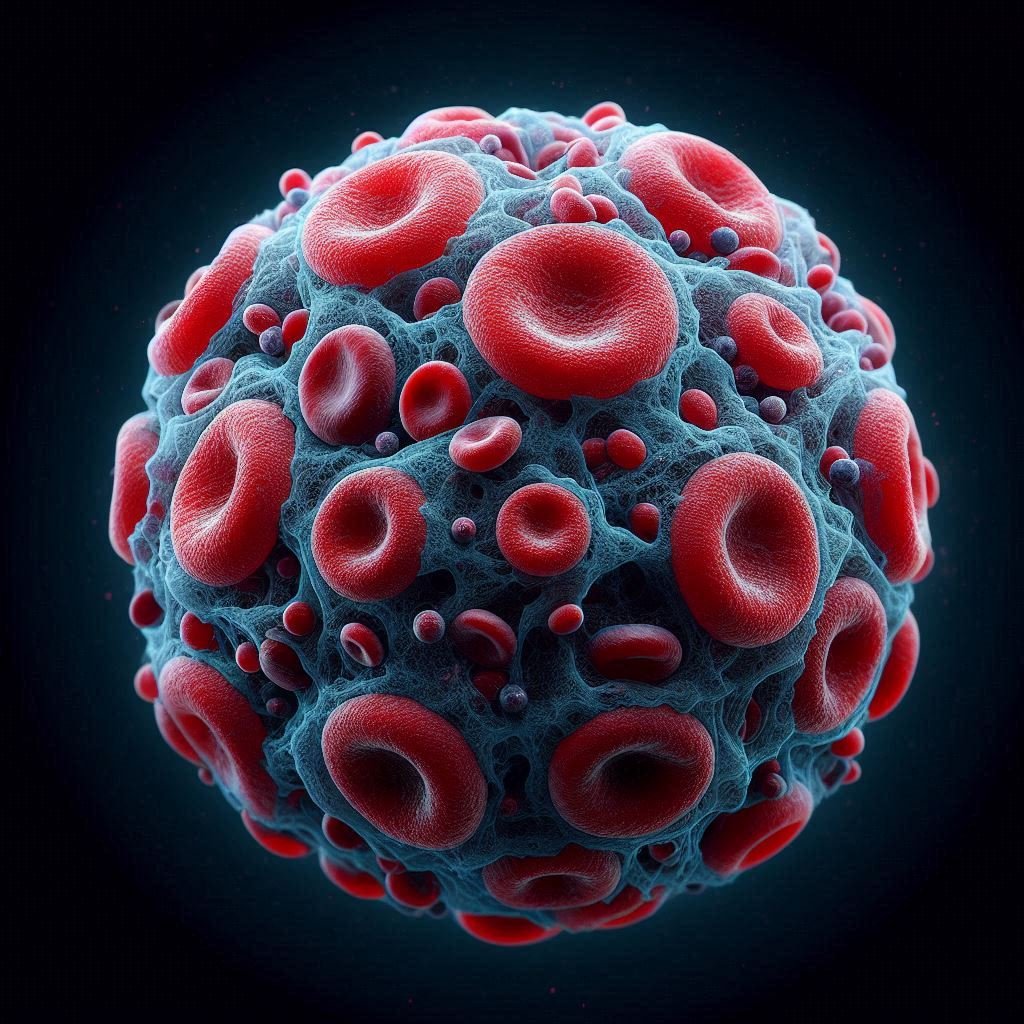
The Myelodysplastic syndromes (MDS) is an abnormality of the bone marrow, which gradually affects the producton of healthy blood cells. The most common sign is anemia, which means there are too few mature red blood cells to carry oxygen. The immature blood cells, called blasts, do not function normally and either die in the bone marrow or soon after they enter the blood. In myelodysplastic syndromes, the stem cells do not mature into healthy red blood cells, white blood cells, or platelets. Myelodysplastic syndromes can be classified as primary (no known exposure) or secondary as a complication of aggressive treatment of other cancers with exposure to radiation, alkylating agents, or topoisomerase II inhibitors and heavily pretreated patients with autologous bone marrow transplants. Many of the blood cells formed are defective. Each year between 15,000 and 20,000 new cases of MDS are diagnosed in the United States. The original classification of MDS was developed more than 20 years ago at an international conference attended mostly by doctors from France, the United States, and Great Britain. No truly effective treatment exists for most people with myelodysplastic syndromes, and therapy for myelodysplastic syndromes usually focuses on reducing or preventing complications of the disease and of treatments.
A myelodysplastic syndrome may develop following treatment with drugs or radiation therapy for other diseases, or it may develop without any known cause. The disease is often not diagnosed until the patient is seen by a hematologist, and cannot be definitively diagnosed until a bone marrow sample taken from the patient is examined by an expert hematologist or hematopathologist. Many patients with myelodysplastic syndromes suffer from a variety of symptoms caused by low blood counts. Other patients have no symptoms at all. MDS is classified into groups according to findings on peripheral blood smear, bone marrow histology, and clinical findings. The bone marrow in myelodysplastic syndrome is typically more active than normal and yet the numbers of blood cells in the circulation are reduced. This is because most of the cells being produced in the bone marrow are defective and are destroyed before they leave the bone marrow to enter the blood stream. Myelodysplastic syndromes occur most often in older people, but they can occur in younger people. Some younger people with myelodysplastic syndromes who are in otherwise good health may be candidates for a bone marrow transplant, which may help prolong life.
Causes of Myelodysplastic syndromes
The common causes and risk factor’s of Myelodysplastic syndromes include the following:
The exact cause of Myelodysplastic syndromes is not known.
Viral infections.
Past treatment with chemotherapy or radiation therapy.
Compounds such as benzene.
Smoking.
Certain congenital diseases.
Previous topoisomerase inhibitor (rare) administration may be a factor.
Symptoms of Myelodysplastic syndromes
Some sign and symptoms related to Myelodysplastic syndromes are as follows:
Anemia.
Shortness of breath.
Bleeding or bruising.
Fever or frequent infections.
Fever.
Susceptibility to infections.
Malaise, and a general feeling of tiredness.
Abnormal granules in cells, abnormal nuclear shape and size.
Chest pain.
Treatment of Myelodysplastic syndromes
Here is list of the methods for treating Myelodysplastic syndromes:
People with high risk myelodysplasia may only need supportive treatment to help improve any symptoms caused by low blood counts.
Central line access is often needed for chemotherapy and transfusion.
Transfusion therapy: People with anemia induced by myelodysplastic syndromes are likely to receive transfusions of red blood cells, which help relieve anemia and fatigue.
Bone marrow transplantation provides a curative option for some patients.
Drips (transfusions) of blood or platelets can be given to help improve symptoms.
Antibiotics may also be needed to treat or prevent infection. This is often known as supportive treatment.




